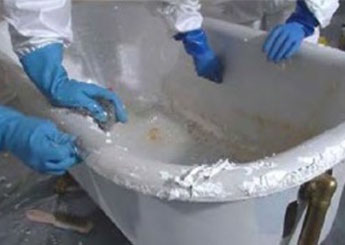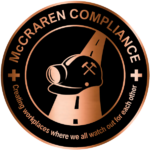
Washington — Methylene chloride poses “unreasonable risk” to workers under certain conditions, according to a final risk evaluation recently released by the Environmental Protection Agency, which now is compelled to propose within one year regulatory action to mitigate the chemical’s hazards.
Frequently used for bathtub refinishing, methylene chloride is among the first 10 chemicals under evaluation for potential health and environmental risks under the Frank R. Lautenberg Chemical Safety for the 21st Century Act. In 2014, EPA found that exposure to the chemical may cause cancer, harm to the central nervous system and toxicity to the liver, among other adverse health effects.
The final evaluation, published June 19, is the first to be released for the 10 chemicals. Announced via a notice published in the June 24 Federal Register, the document states methylene chloride poses unreasonable risk to workers involved in numerous operations, including:
- Plastic and rubber manufacturing
- Electrical equipment, appliance and component manufacturing
- Oil and gas drilling, extraction and support activities
- Adhesive/caulk removal
- Cold pipe insulation
- Aerosol and non-aerosol degreasing and cleaning
Additionally, EPA determined an unreasonable risk is not present during the following conditions of use:
- Domestic manufacture
- Processing as a reactant
- Recycling
- Distribution in commerce
- Industrial and commercial use as a laboratory chemical
- Disposal
As required under the Toxic Substances Control Act, which the Lautenberg Act amended, EPA must address risks by proposing within one year regulatory actions such as training, certification, restricted access, and/or ban of commercial use, and then accept public comment on any proposals.
“Releasing the first final risk evaluation marks a key milestone in our efforts to fulfill our responsibilities for ensuring the safety of chemicals already on the market,” Alexandra Dapolito Dunn, assistant administrator of the EPA Office of Chemical Safety and Pollution, said in a June 19 press release. “By following the TSCA process, we can have confidence in our final conclusions and move forward with developing a plan to protect the public from any unreasonable risks.”
In March 2019, EPA published a final rule that prohibits manufacture (including import), processing and distribution of the substance in paint removers for consumer use, as well as requires manufacturers, processors and distributors to notify retailers and others in the supply chain about the ban.
EPA Administrator Andrew Wheeler said in the release that the action “builds on last year’s ban on consumer sales of certain methylene chloride products and will guide the agency’s efforts to further reduce risks from this chemical.”
Liz Hitchcock, director of the Washington-based advocacy group Safer Chemicals, Healthy Families, called on the agency to expedite its regulatory actions, contending in a June 19 statement that “the longer EPA drags its feet, the more lives will be lost.” According to Safer Chemicals, Healthy Families, at least 64 people have died from acute exposure to methylene chloride since 1980.
“The time for study and talk is long past,” Hitchcock’s statement reads. “EPA should take immediate action on the danger it has once again recognized in this risk evaluation and finish the job to protect workers. The agency must immediately finalize its proposed ban on commercial use of these products. To wait any longer to protect workers from these dangerous products when EPA has the ability to ban them now is unconscionable and will result in more preventable deaths.”
In April 2019, Safer Chemicals, Healthy Families was part of a coalition of groups representing worker rights that filed a lawsuit against EPA and Wheeler for excluding workers in the final rule.
EPA previously solicited comments on problem formation documents for the first 10 chemicals before releasing its first draft risk evaluation – for Pigment Violet 29 – in November 2018. The agency released its draft risk evaluation for methylene chloride in October.
EPA says it plans to release final risk evaluations for the remaining nine of the first 10 chemicals by the end of the year.


